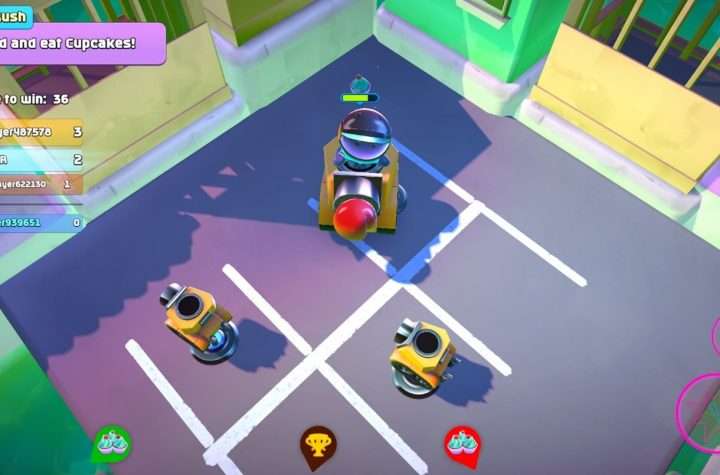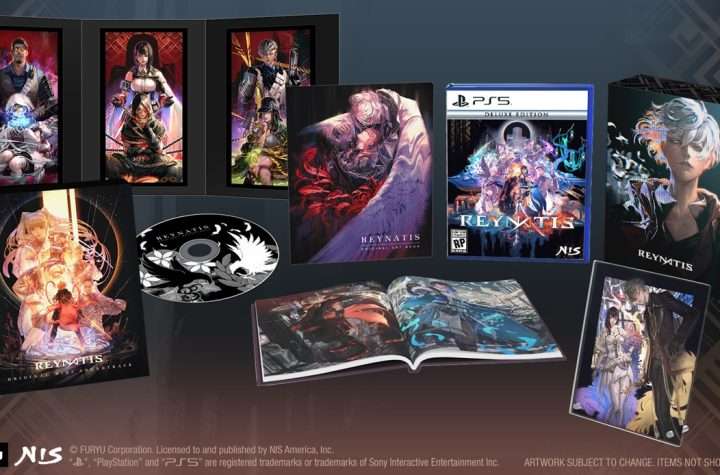I love pets. Everyone loves pets. So, when I saw that the fine folks at Long Term Games and Enjoy Studio developed a game about a dog in space that was inspired by real life astronaut animals, I was intrigued to say the least. Which leads me to why you’re reading this review: is Space Tail: Every Journey Leads Home good? With its charming graphics and story and surprisingly good gameplay, I’d say that it is a very solid children’s puzzle game.

Starting off with the presentation, Space Tail is a game that is very pleasing to look at. The art style is reminiscent of a children’s story book, with the game’s cutscenes and narration adding to that feeling. That isn’t to say that the art style is bad or simple, in fact it’s quite the opposite. Environments are beautifully rendered and detailed, with the game’s various planets each feeling visually distinct from each other. There is also a wide variety of environments to explore, from abandoned space stations to lush jungles to vast deserts and even a landscape of glowing purple crystals. The biggest issue with the game’s presentation is the abundance of loading screens. It felt like I was encountering a loading screen every few seconds during my playthrough with how often they kept popping up, and it ruined the pacing of the gameplay for me. The worst of it came when each phase of a boss fight was interrupted by a loading screen.
The gameplay is where Space Tail truly shines. Controlling the game’s canine protagonist Bea feels great as her jumps and movement have a decent weight to them, with platforming being just as rewarding as solving the game’s many puzzles. Because the protagonist is a dog, Space Tail incorporates many canine traits into gameplay mechanics incredibly well. The best of these traits is the game’s use of the senses. Like in many other games, Bea has a kind of “detective mode” that allows players to see things in the environment that they otherwise might have missed; however, this game’s version of the mechanic doesn’t highlight objects of interest. Rather, the player is given three modes: sight, smell, and hearing. Smell can inform you of hidden obstacles (such as toxic fumes) while also pointing you towards collectibles, sight can tell you the visible range and moods of enemies, and hearing can inform you of an enemy’s position as well as the noise Bea makes. Each sense is specialized in a way that prevents overreliance on just one of the senses and has puzzles designed around their use.
On the opposite end of the spectrum, the communication mechanics feel undercooked. Throughout the game, players will encounter many alien species and must attempt to communicate with them through a series of actions Bea can perform. Each action has a different effect on a different species, and players must befriend certain aliens to proceed. Unfortunately, the process of finding out which action evokes the desired response is purely a guessing game and out of the four emotional states players can evoke (those being happiness, anger, fear, and indifference), only happiness really matters. I can only count one puzzle in which evoking a response other than happiness was the key to solving a puzzle, and it was in the tutorial for communication. It’s a guessing game with wasted potential in its application.
Moving onto the other mechanics, the game offers you two sidekicks that change how you play. The A.I. companion can hack machinery and robotic enemies and also make you invisible when crouching, where the meteor companion can allow you to double-jump, move heavy objects, and attack enemies. These companion abilities, when used in combination with Bea’s dog abilities, provide a wide range of puzzle-solving possibilities, and the game capitalizes on that potential with a variety of puzzles to solve.
The level design is incredibly varied, with each area of each planet having its own puzzle to solve. In addition to using your own abilities, the game continuously adds in mechanics and level gimmicks to keep gameplay fresh. Every planet has its own unique mechanic that helps to differentiate levels on a deeper level than the aesthetic. Granted, this is a children’s game first and foremost, so the puzzles aren’t that difficult to solve, but I can imagine that kids will have fun trying to solve them.
In the end, Space Tail: Every Journey Leads Home is a good children’s game. It’s a fun storybook adventure and tribute to the animal astronauts that helped us explore the stars. With gameplay mechanics that rarely get tiring and unforgettable locations, I can safely give this game an 8/10.
For more information, visit the Nintendo eShop and Steam.
Related: Reviews by Josh Freeman
I love games and love talking about games. Some of my favorites include action games (both 2D and 3D), metroidvanias, roguelikes, shooters, and Indies.





More Stories
RUMBLE CLUB Review for Steam
Another Crab’s Treasure Review for PlayStation 5
NIS America Announces September 27 Release Date for Action-packed Magical RPG REYNATIS